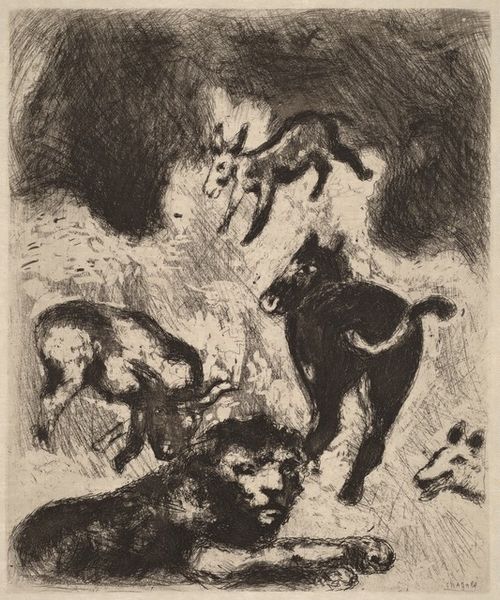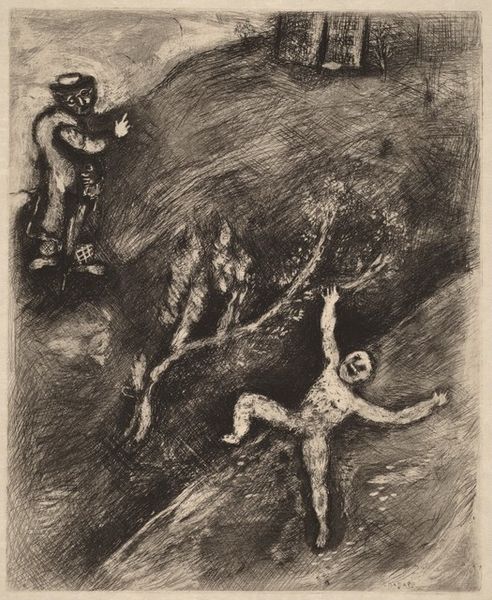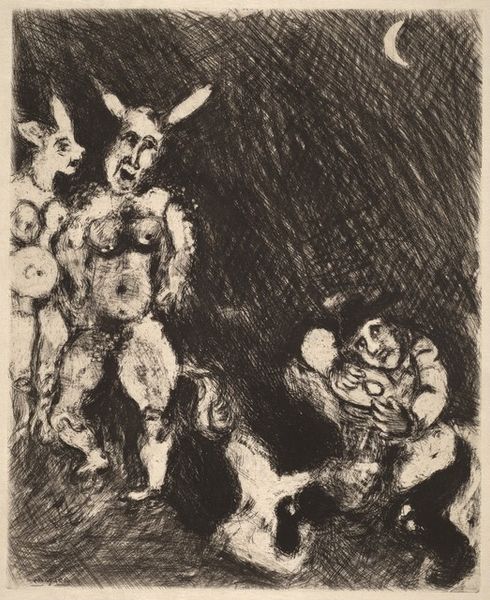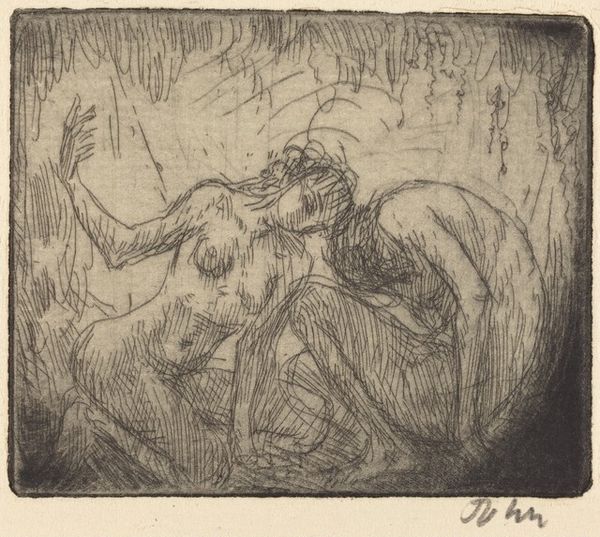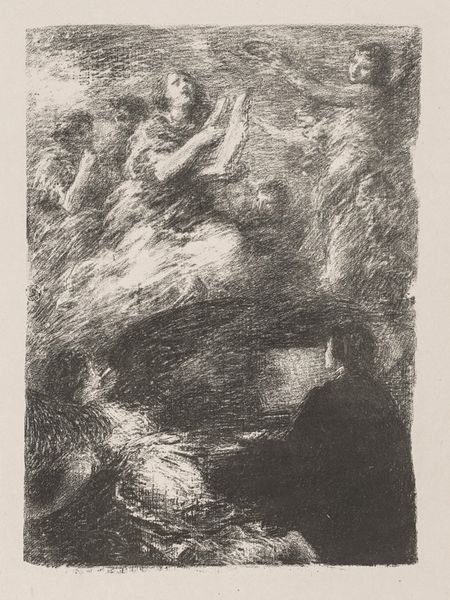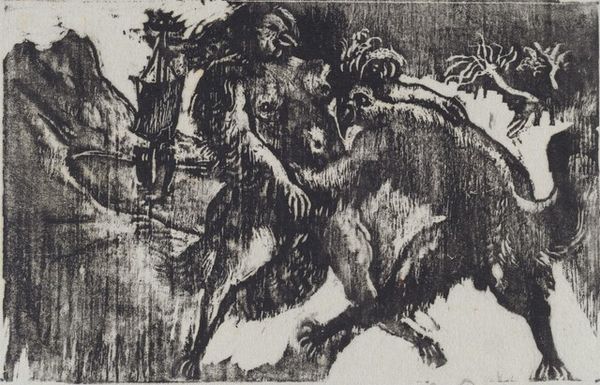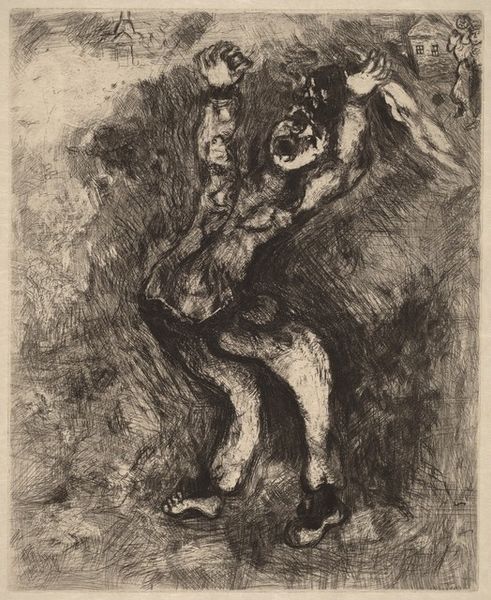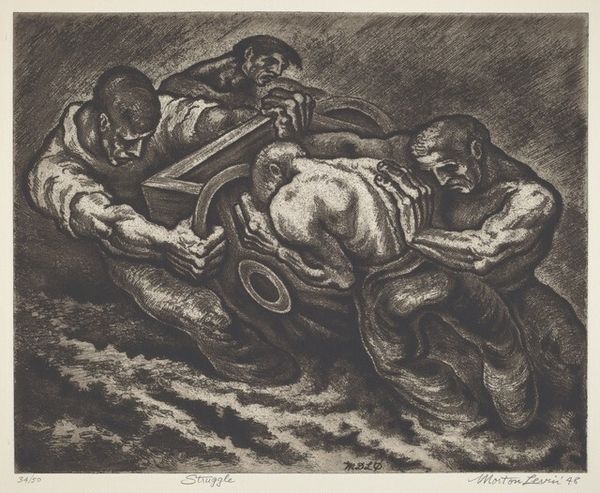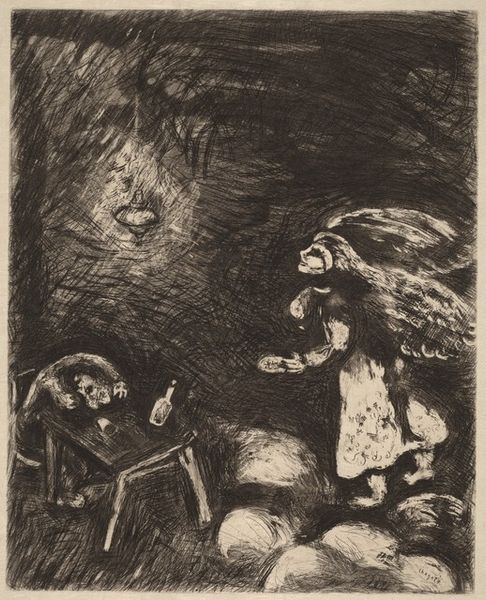
print, etching
#
portrait
# print
#
etching
#
pencil sketch
#
portrait drawing
#
nude
Copyright: National Gallery of Art: CC0 1.0
Curator: We're looking at Marc Chagall’s etching, "The Old Woman and Her Two Servants," likely created between 1927 and 1930. An intaglio print, its monochromatic shades pull the viewer into a realm of curious shadows. Editor: It evokes a dream state, a fleeting moment captured with sharp lines yet strangely ambiguous. The stark contrast between light and shadow emphasizes this. There's an underlying current of… voyeurism, perhaps? Curator: The composition is deliberately complex. Note the way Chagall divides the plane. Above, the intertwined nudes suggest an Arcadian idyll; below, a somber figure, possibly the old woman of the title, witnesses their bliss. Editor: Do these 'servants' represent idealized, youthful sexuality, contrasted against the older woman's supposed desexualization? Considering the artwork’s historical context, and issues of representation for aging women at that time, the dynamic feels layered. Curator: Semiotically, the bodies act as signs pointing beyond themselves. Observe the stark etching of lines against the bare page. What ideas about space and narrative structure does that contrast present? Editor: I see a dialogue on aging, beauty, and societal power structures—the artist might comment on marginalized members that the prevailing discourse forgets or obscures. How does her expression, caught in a penumbra of crosshatching, tell of societal anxieties regarding aging female desire? Curator: But we must first engage with its formal organization; without recognizing the aesthetic intentionality, these readings will always come off somewhat slanted, if you don’t mind me saying so. Editor: Yes, but artistic decisions often emerge from the messy realities of historical and political currents, no? We should consider Chagall's personal history, especially the diaspora experience within Eastern Europe; his relationship with subjects and characters and societal realities adds more layers of analysis here. Curator: I appreciate how your sociological framework provides insight into thematic considerations, but through close examination, one is struck with the print's intricate networks of form, shape, and shadow. Editor: Understanding its sociopolitical underpinnings—even the subtleties—broadens its artistic scope.
Comments
No comments
Be the first to comment and join the conversation on the ultimate creative platform.

